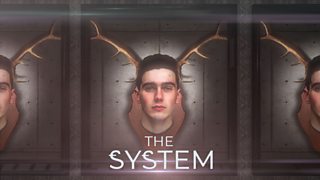Song of the Reed – Swallowtail
Song of the Reed: Swallowtail is the first of four seasonal Radio 4 dramas following life on a wetlands nature reserve in Norfolk over one year, starring Sophie Okonedo and Mark Rylance.
Recorded on location at RSPB’s Strumpshaw Fen, the story is informed by the real work and science of conservation taking place in the face of rapid environmental change in the wetlands of Norfolk, and everywhere.
Each drama will focus on one species represented at Strumpshaw Fen. Here, RSPB volunteer Jenna explains why the magnificent Swallowtail butterfly is so special.

-
![]()
Song of the Reed: Swallowtail
Sophie Okonedo and Mark Rylance star in the first of Steve Waters’s seasonal dramas following the life of Fleggwick, a fictional wetlands nature reserve, over the period of one year. Recorded at Strumpshaw Fen in Norfolk, each episode of the drama focuses on one species resident at the reserve.
Swallowtails are special not only because they are strikingly beautiful but also because they are one of Britain’s rarest butterflies. Historically, their range was much larger as fens covered more of the country, but they are now restricted to the Norfolk Broads. A similar trend of declines is being seen in many UK species: the found that butterfly numbers are down by 17% since 1970 – so every action we take to look after our butterflies counts!
Swallowtails were once found in wetlands across the UK but their numbers declined sharply in the 1920s. Nowadays careful management of the habitats in which they thrive is enabling a slow reversal of their fortunes. Swallowtail distribution is wholly dictated by the availability of milk parsley, its caterpillar food source.
When the Norfolk Broads were actively managed by reedcutters who harvested both reed and sedge for thatching, areas were left clear, enabling milk parsley, and consequently swallowtail butterflies, to flourish.
Around World War One demand for thatch declined sharply as other roofing materials became more popular. By the 1980s many of the Broadland reed and sedgebeds had become overgrown and neglected. Milk parsley had been all but choked out, depriving swallowtail caterpillars of their lunch. Conservationists now recognise the necessity of regular reed and sedge cutting to nurture swallowtails and other Broadland wildlife.

Song of the Reed
In the drama, a mating pair of swallowtail butterflies puts in a fleeting appearance.
Swallowtail caterpillars feed almost exclusively on the foliage of milk parsley plants. Milk parsley is also fussy about where it grows, preferring high-quality fen habitat.
The fen is managed to maintain a specific community of plants that provide excellent habitats for all our star species, including bitterns, bearded reedlings and marsh harriers, as well as our swallowtails.
To do this, we mow many areas of the fen on a four-year rotation while our highland cattle graze other areas for us, and some areas are left alone. This mimics the historical land uses of the fen as closely as possible, with a few tweaks (such as four years rather than one year between mowing) to optimise the habitat for wildlife.

The team also keeps a close eye on the salt levels in the fen water and manages this by taking water off the reserve via the sluices when the river floods. This is because species such as milk parsley are not salt-tolerant and would disappear if the reserve were to transition to a salt marsh habitat.
For this reason, sea-level rise and seasonal flooding is of growing concern for the conservation of swallowtails and their habitats in the Norfolk Broads. Creating new fens further inland and translocating species are possible options for the future.
Listen to Song of the Reed: Swallowtail.
Related Link

-
![]()
Drama on Radio 4
Listen to compelling dramas on Radio 4.
-
![]()
The Limelight podcast
Fiction and drama serials you won’t want to miss from Radio 4.
-
![]()
Costing the Earth: Insect Extinction?
What did insects ever do for us? Tom Heap asks leading entomologists how we can stop their decline.
-
![]()
Metamorphosis - How Insects Transformed Our World
Erica McAlister on the hoverfly that arguably undergoes the biggest transformation of any animal.





